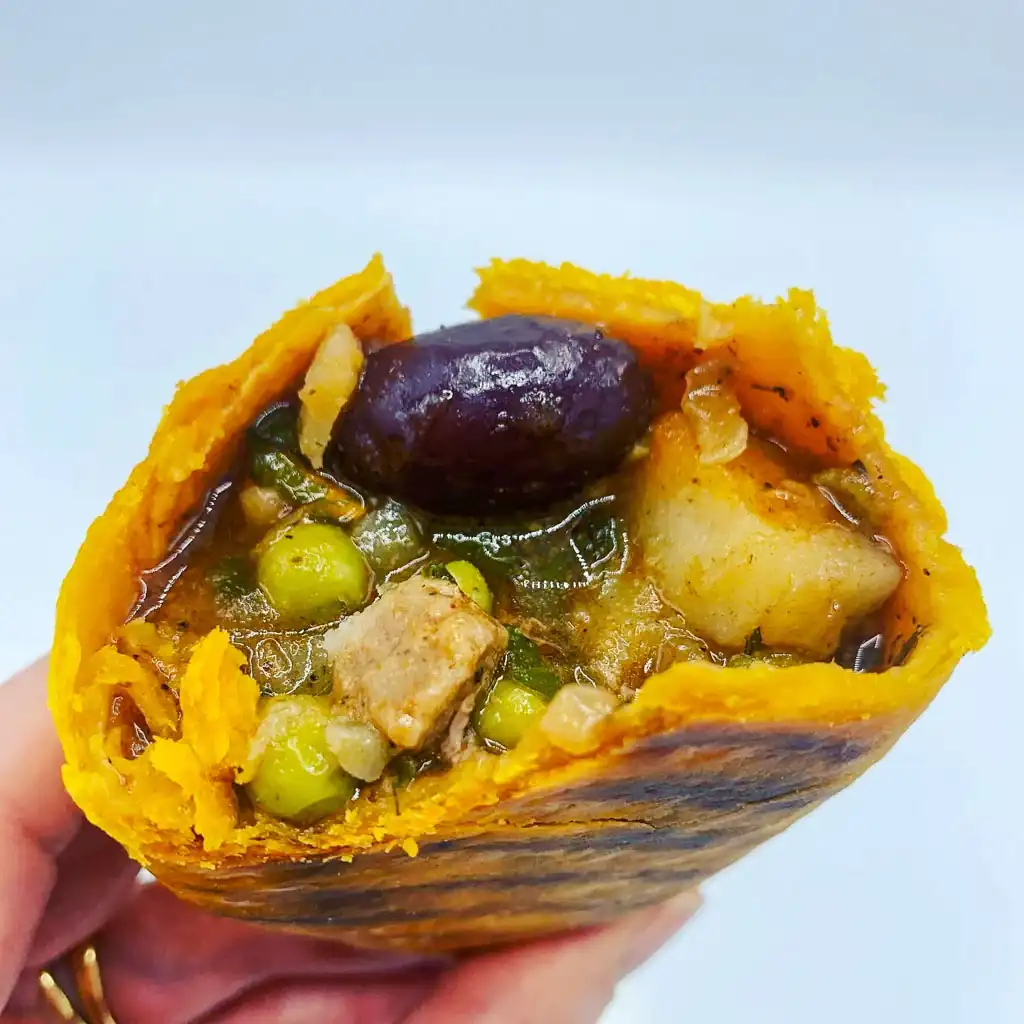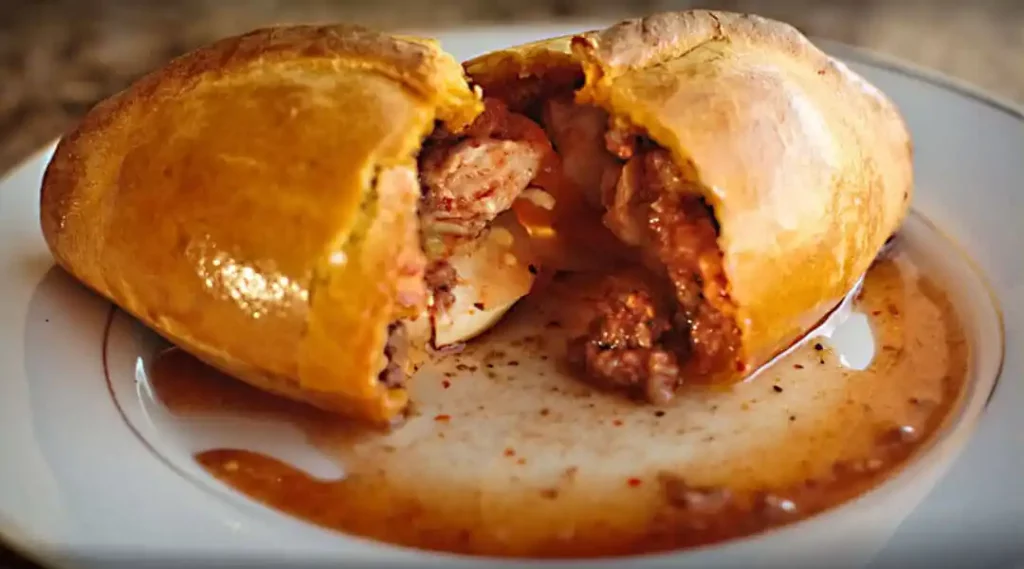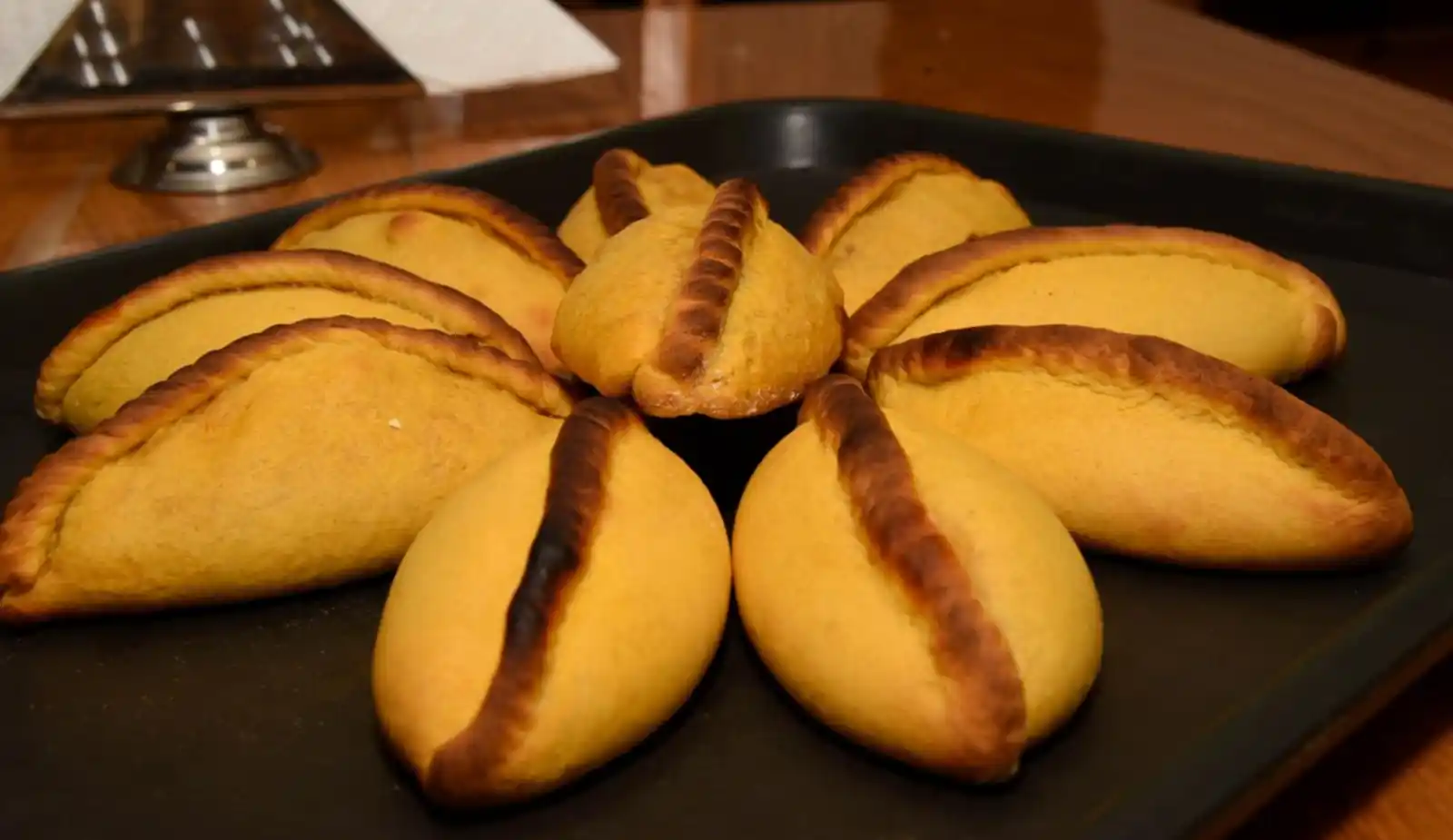Are you craving a taste of Bolivian cuisine? Look no further than the delicious Bolivian Saltenas. Originally from the city of Salta, Argentina, these empanada-like pastries have become a staple in Bolivian cuisine.
They are filled with a savory mixture of meat, vegetables, and spices, creating a mouthwatering experience with every bite. In this article, we will share with you an authentic Bolivian Saltenas recipe so you can recreate this delightful dish in your own kitchen.
Bolivian Saltenas Recipe
Now that we have piqued your interest, let’s jump right into the authentic Bolivian Saltenas recipe. This recipe will walk you through the step-by-step process of making these delectable pastries, ensuring that your final result is as delicious as those found in Bolivia.
⏱ Preparation Time
🕒 Approximately 2 hours
👥 Servings
🍽 Serves around 35 people



Salteña Dough:
Ingredients:
- 9 cups of flour (1250 grams)
- ½ pound of lard (225 grams)
- 225 grams of sugar
- 1 tablespoon of salt
- 1 egg
- 2 tablespoons of annatto (achiote)
- 460 ml of water
Preparation:
- Melt the lard over medium heat with the annatto, then strain and mix with the flour to form a sand-like texture.
- Make a well in the center and add water, sugar, salt, and the egg, dissolving the ingredients well.
- Then, mix everything and knead vigorously.
- Form into balls, refrigerate, and let the dough rest for at least 6 hours.
Meat Filling :
Ingredients:
- 1 cup of chopped onion
- Oil as needed
- 3 tablespoons of red chili (can be spicy)
- 1 cup of diced and boiled potatoes (no salt)
- ½ cup of cooked peas
- ½ kilo of minced meat
- 1 teaspoon of cumin
- ½ teaspoon of pepper
- 2 cloves of chopped garlic
- ½ cup of sugar
- 4 tablespoons of unflavored gelatin
- 1 ½ liters of beef broth
- ½ cup of chopped parsley
- 1 handful of oregano
Preparation:
- In a skillet with a little oil, fry the onion with garlic and sugar until partially golden, then add the red chili, cumin, pepper, and a little water; cook for 5 minutes.
- In a separate skillet, fry the meat in a little oil, season with pepper and salt, and set aside.
- Once the mixture is cooked, add the meat preparation and incorporate the beef broth. Cook for at least 20 minutes to concentrate the flavor.
- Taste and adjust seasoning, cook a little more, then add the unflavored gelatin, allowing it to dissolve in the mixture until it boils, then turn off the heat.
- Finally, add the potatoes, cooked peas, parsley, and oregano, and let cool before refrigerating until the gelatin solidifies.
- Fill the Salteña with the mixture, adding a piece of hard-boiled egg and olive; remove air and seal well, then refrigerate.
- Place the Salteñas on a baking sheet 10 centimeters apart and bake for 10 to 12 minutes at a high temperature of at least 250 to 350 degrees Celsius (480 to 640 degrees Fahrenheit).
Tips to Prevent Bursting:
- It’s better to prepare your dough a day in advance as it requires rest to relax the gluten.
- Ensure a well-done seal; the technique is different from empanadas and should be somewhat rolled – practice makes perfect.
- Don’t use regular measuring cups for butter or margarine; use pastry measuring cups.
- Preheat your oven between 250 to 350 degrees Celsius (480 to 640 degrees Fahrenheit).
- Avoid overcooking the Salteñas.
- Better to bake the Salteñas frozen to minimize loss.
- Avoid too much liquid in the jigote.
- Remove air before sealing the Salteñas.
Now that you have this authentic Bolivian Saltenas recipe, you can impress your friends and family with a taste of Bolivia in your own kitchen. Whether you enjoy them as a snack or for breakfast, these savory and slightly sweet pastries are sure to please your taste buds. Get ready for a flavor explosion with every bite!
What are Bolivian Saltenas?
Bolivian Saltenas are similar to empanadas, but with a unique twist. They are larger in size and filled with a sweet and savory mixture that distinguishes them from other empanada varieties. The dough is made from scratch and is slightly sweet, adding a delightful contrast to the rich and flavorful filling.
The filling is what sets Bolivian Saltenas apart. It typically consists of a mixture of ground beef or pork, potatoes, peas, carrots, onions, raisins, olives, hard-boiled eggs, and a variety of spices such as cumin, paprika, and oregano. All these ingredients come together to create a flavor explosion that will leave you wanting more.
The History of the Bolivian Salteña
The Bolivian empanada, better known as the salteña, must be juicy. It is distinguished from other empanadas around the world by three key ingredients: broth, chili (ají), and potato.
The salteña’s origins in Potosí gained notoriety this year, even acknowledged by the mayor of Potosí, Williams Cervantes, in a public event in La Paz. The occasion was the dissemination of a municipal law by which the Government’s headquarters declared the salteña, along with 21 other foods, as intangible heritage of the municipality.
Though the law was promulgated on October 11, 2012, it only became widely known in 2017. The Potosinos’ outrage was such that a defense committee was formed, involving civil society representatives.
This controversy sparked a debate not only about the origin of the salteña but also about its name. Simplistic but incorrect arguments suggested that, being called “salteña,” it must have originated in Salta, Argentina.
Origins of Bolivia’s Salteña
The prevailing opinion is that this empanada has Arab origins, having spread through parts of Europe and North Africa during the Muslim occupation. However, the Spanish disagree. The Iberian Peninsula was conquered by Muslims in 711, with their occupation lasting until 1492, so they are not fond of suggestions that some of their dishes have Arab origins.
Regardless of its precise origins, it’s evident that the empanada arrived in America aboard the galleons of the Spanish conquistadors, along with much of the medieval Spanish cuisine of the 14th and 15th centuries. The Spanish brought their food, but it wasn’t enjoyed by all inhabitants of America, given the social stratification of that era.
“The role of food as a symbol of status and wealth was crucial for the social life of banquets, celebrations, and soirees, reflecting the image of the Hispanic elites in the major colonial capitals of America,” says historian and researcher Beatriz Rossells in her book “Gastronomy in Potosí and Charcas in the 18th, 19th, and 20th Centuries.”
The food arrived in the ships’ holds, serving as sustenance for the occupants, but also for those settling in the colonies. The main source of sustenance for the conquistadors was the food existing in America, but the inevitable cultural mixing meant that European dishes were introduced to the Americas and vice versa.
Due to its economic significance, the American city that most benefited from the arrival of European foods and recipes was Potosí. Rossells notes that Potosí was a “remarkable cosmopolitan city with 160,000 inhabitants according to the 1611 census, where not only Spaniards but also Italians, French, Portuguese, Greeks, Turks, as well as indigenous people, Africans, and even Asians converged.”
“It was one of the world’s most populated cities and the most important in America due to its mining activities, a source of immense wealth,” Rossells adds. “There’s no doubt that the Spaniards brought the empanada to all American colonies. From there, the empanada exists in Hispanic America, in almost all countries, with their own variations.”
Antonio Paredes Candia, a major traditionalist in Bolivia, popularized a tradition about the origin, which is still attributed today to one of Argentina’s leading literary figures of the 19th century, Juana Manuela Gorriti.
Fleeing the dictatorship of Rosas, the Gorriti family left their native Salta and entered Bolivia through Potosí. To survive, the Gorritis – the mother, Doña Feliciana, and daughters Carmen and Juana Manuela – sold empanadas using a recipe from Salta. It’s unclear whether this sale took place in Potosí, where the family of exiles stayed for a while, or in Sucre, the capital at the time.
Regardless of where the Gorritis sold their empanadas, the tradition rescued by Paredes Candia suggests that it was during these efforts that Juana Manuela met two young and handsome officers of the Bolivian army, José Ballivián and Manuel Isidoro Belzu.
She married Belzu, with whom she had two daughters, Edelmira and Mercedes, but her supposed extramarital relationship with Ballivián gained substance as historians delved into it. As is known, both Ballivián and Belzu became presidents of Bolivia and conspired against each other.
Antonio Paredes Candia liked to say that the entire affair started with the empanadas that the Gorritis, originally from Salta, sold, whether in Potosí or Sucre, to support themselves during their first months of exile.
“The salteña is the empanada of infidelity. If you don’t believe it, just look at its shape,” he would say, smiling, as he ate one at his book stall set up on the Boulevard whenever he visited Potosí.
People who bought the empanadas said they were “the ones from Salta” or “the salteñas.” Thus, according to this version, the empanada got its name.
In any case, the salteña, as it is known today, has a long history that dates back to the colonial era. It’s a dish that symbolizes the rich cultural and culinary fusion that took place in the Americas during and after the Spanish conquest.

